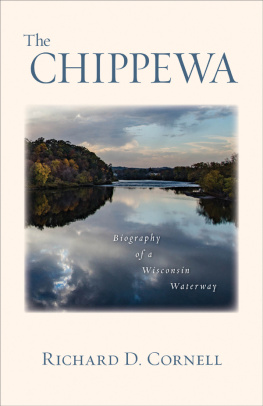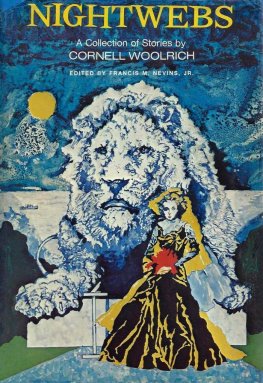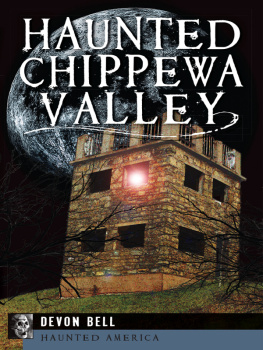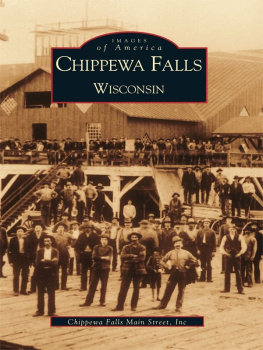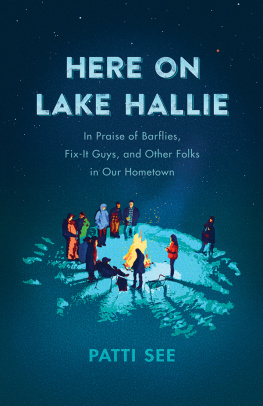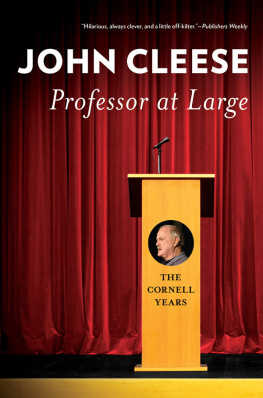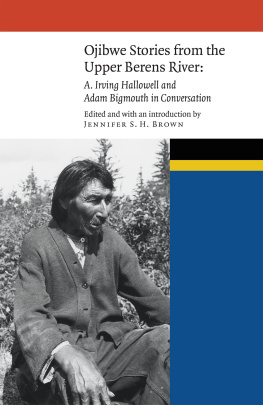The Chippewa
The Chippewa

Biography of a Wisconsin Waterway
Richard D. Cornell
WISCONSIN HISTORICAL SOCIETY PRESS
Published by the Wisconsin Historical Society Press
Publishers since 1855
2017 by the State Historical Society of Wisconsin
E-book edition 2017
The Wisconsin Historical Society helps people connect to the past by collecting, preserving, and sharing stories. Founded in 1846, the Society is one of the nations finest historical institutions.
Order books by phone toll free: (888) 999-1669
Order books online: shop.wisconsinhistory.org
Join the Wisconsin Historical Society: wisconsinhistory.org/membership
For permission to reuse material from The Chippewa (ISBN 978-0-87020-780-8; e-book ISBN 978-0-87020-781-5), please access www.copyright.com or contact the Copyright Clearance Center, Inc. (CCC), 222 Rosewood Drive, Danvers, MA 01923, 978-750-8400. CCC is a not-for-profit organization that provides licenses and registration for a variety of users.
Photographs identified with WHi or WHS are from the Societys collections; address requests to reproduce these photos to the Visual Materials Archivist at the Wisconsin Historical Society, 816 State Street, Madison, WI 53706.
Cover image by Matt Schrupp
Designed by Brian Donahue and Jessica Collette / bedesign, inc.
21 20 19 18 17 1 2 3 4 5
Library of Congress Cataloging-in-Publication Data
Names: Cornell, Richard D., 1945 author.
Title: The Chippewa : biography of a Wisconsin waterway / Richard D. Cornell.
Description: Madison, WI : Wisconsin Historical Society Press, 2017. | Includes bibliographical references and index.
Identifiers: LCCN 2016053807 (print) | LCCN 2016055105 (ebook) | ISBN 9780870207808 (paperback : alkaline paper) | ISBN 9780870207815 (ebook)
Subjects: LCSH: Chippewa River (Wis.)Description and travel. | Cornell, Richard D., 1945TravelWisconsinChippewa River. | Chippewa River Valley (Wis.)Description and travel. | Chippewa River (Wis.)History. | Chippewa River Valley (Wis.)History, Local. | Chippewa River Valley (Wis.)Biography.
Classification: LCC F587.C5 C67 2017 (print) | LCC F587.C5 (ebook) | DDC 917.75/404dc23
LC record available at https://lccn.loc.gov/2016053807
For Adam Cahow, PhD,
who encouraged me to take this journey
and advised me along the way,
For the many people along the Chippewa
who trusted me with their stories,
For my children, Andrew, Brian, and Kristen,
and, of course, for my wife, Dixie,
who tolerated much and would rather be in London.
Contents
Chapter 1 Origins of the Chippewa
From the Ice Age to the Ojibwe
Chapter 2 Writing the River
East Fork, Glidden, and Bear Lake
Chapter 3 Beyond the Water
Return to Glidden
Chapter 4 Where Waters and Cultures Meet
Lake Chippewa Flowage
Chapter 5 Moving Water
Winter
Chapter 6 Reading the River
Bruce
Chapter 7 The Wild Chippewa
The Flambeau River to Jim Falls
Chapter 8 Shaping a River
Jim Falls to Lake Wissota
Chapter 9 Turning Points
Chippewa Falls
Chapter 10 The Sounds of Summer
Eau Claire
Chapter 11 A Storybook Ending
The Lower Chippewa
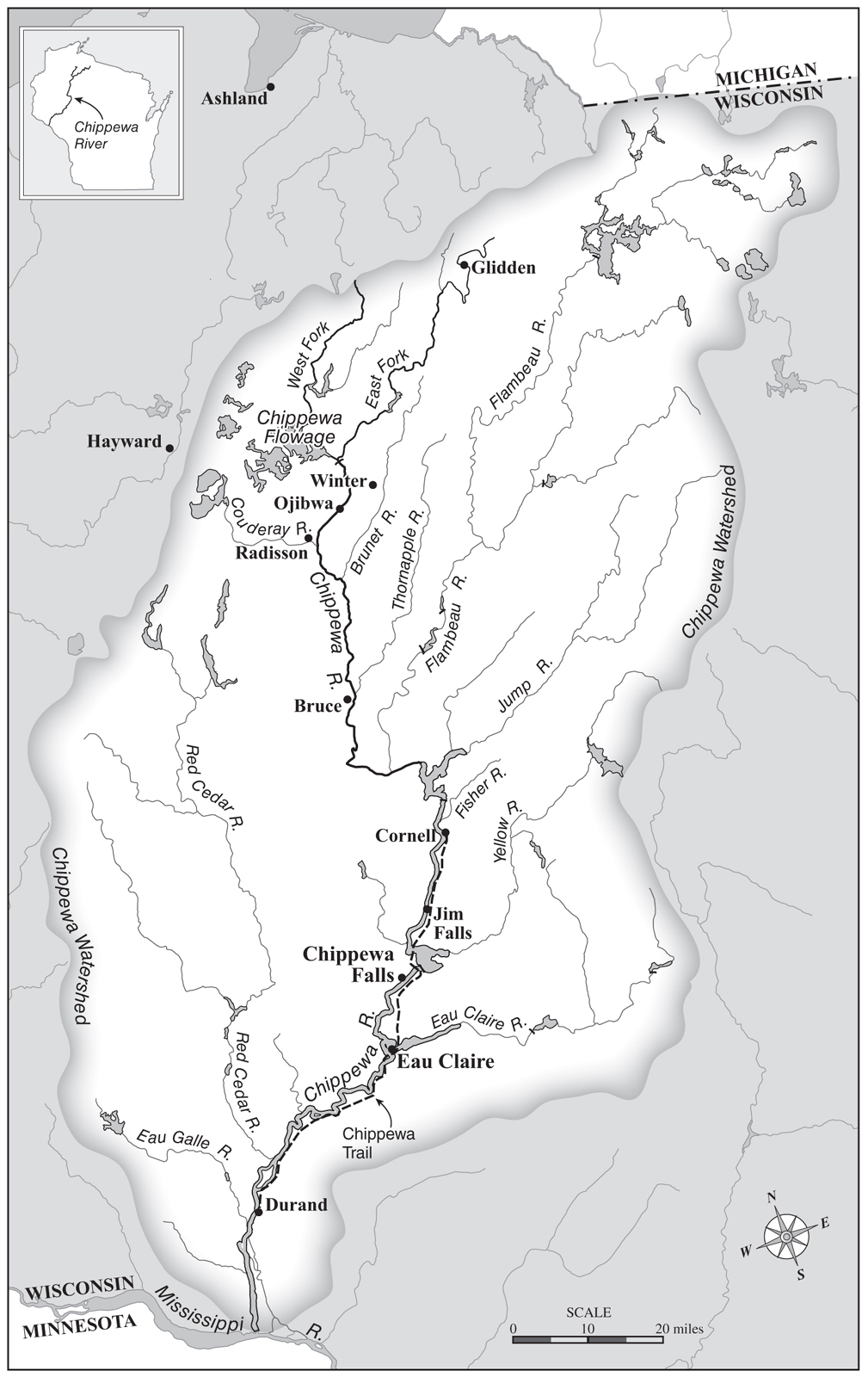
MAPPING SPECIALISTS
Any river is really the summation of the whole valley. To think of it as nothing but water is to ignore the greater part.
HAL BORLAND, THIS HILL, THIS VALLEY
I have been attracted to moving water most of my life. One of my earliest memories was of the small pools and trickles of water I found in the woods behind my house and below two Lutheran churches in the southern Wisconsin township of Christiana. I was a five-year-old war orphan, which gave me the opportunity to explore the countryside near home alone. When I was eight years old we moved to a forty-acre farm east of Utica, Wisconsin. By that time my mother had remarried, and I had a brother, Dennis, and a sister, Mary Ellen, who were five and seven years younger. Five years is a significant difference when you are young, so I continued my explorations alone.
Near our farm in Utica, a creek emerged between two large oak trees. One day when I was nine or ten, I followed it upstream to its source, where I pushed my face through the watercress and into the bubbling springs. It was the first time I had reached and tasted a source.
In winter the creek became a small trail of ice. Rabbit tracks marked the snow along the frozen creek bed. When spring came I followed the fence lines in search of wild asparagus and studied tadpoles in the creek darting in a small pool above a tiny rock dam.
As an adult, my interest in the sources of rivers continued. Over the course of several decades, I visited the sources of the Mississippi at Lake Itasca; the Loire, flowing from a pipe out of Mont Gerbier de Jonc in southeastern France; and the Thames at Ashton Keynes in Oxfordshire, England. I saw the Avon at Stratford and stood on the beacon in Painswick in the Cotswolds as the morning sun turned the Severn River silver.
I visited the Derwent River as it flowed below William Wordsworths boyhood home at Cockermouth. I found myself inspired by Wordsworths appreciation for the poetry of nature, as when he described his river memories in The Prelude:
O Derwent! Traveling over the green plains
Near my sweet birthplace, didst thou, beauteous stream,
Make ceaseless music through the night and day
Closer to home, I visited the source of the St. Croix. And after my wife, Dixie, and I bought a house in 1984 three blocks from the Chippewa River in Eau Claire, that river became the focus of my exploration and wondering. The University of WisconsinEau Claire walk bridge was our gateway to a bike trail that paralleled the river all the way to the Red Cedar, one of the Chippewas larger tributaries.
In late October of that year we stood on the bridge and watched as a large community of mallards met in small groups seemingly to plan the future. Watching them I began to hatch my own plan for how the river would be a part of my future. My longtime desire to canoe an entire river from its source returned, and I realized this might be the one.
I drew inspiration from August Derleths The Wisconsin, Peter Ackroyds Biography of the Thames, and Mark Twains Life on the Mississippi. Derleth traced the Wisconsin River and its history, including that of the American Indians and other historical figures connected to it. Ackroyds deep study of the Thames detailed how the river inspired literature. Twain explored the Mississippi from the perspective of his childhood in Hannibal, Missouri, to his days as a riverboat pilot. I felt the Chippewa deserved a similar study, and I set out to write it.
As I began this project, I decided to keep a journal to record my experiences and thoughts. I wrote my first journal entry in mid-February 1985. The plan was to begin at the source of the Chippewawhere on the road map it became a narrow line and finally disappeared northeast of the town of Glidden. Between 1990 and 2003 my daughter Kristen and I, accompanied occasionally by my sons, Brian and Andrew, and daughter in-law, Kari, paddled the full length of the river, from the source to the point where it empties into the Mississippi. After achieving that goal in 2003, I felt part of the story was missing. I realized that I was unaware of the history and present-day stories that we paddled past. So I returned to Glidden with Andrew and began another downriver journey, this time with the goal of meeting the people who have made their homes along the river and capturing local and historical stories along the way.

